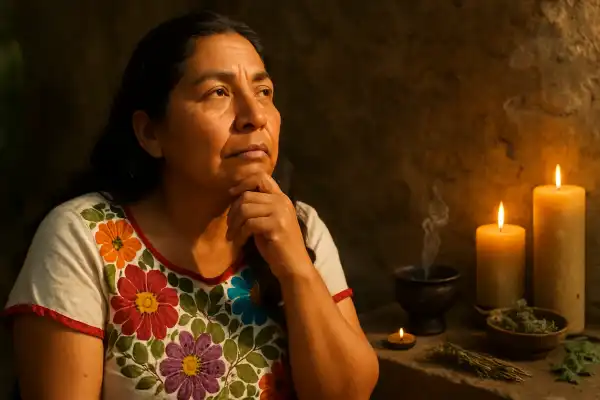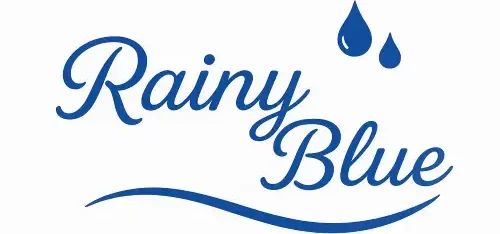How to become a curandera represents one of the most profound questions seekers of ancestral wisdom ask as they feel drawn to traditional Mexican healing arts. Many people experience an unexplainable pull toward this ancient path, sensing a connection to something deeper than conventional approaches to wellness can provide.
María del Pilar Fernández, with her extensive background in cultural anthropology and deep roots in Oaxacan curandera traditions, believes that understanding this sacred calling requires recognizing that curanderismo emerges not from academic study alone, but from a profound spiritual awakening combined with dedicated apprenticeship. Through her writing at RainyBlue.org, she seeks to illuminate this transformative journey for those feeling called to serve their communities through traditional healing practices.
For broken hearts, you should read “Can curandera heal heartbroken people?”
How to become a curandera?
Becoming a curandera begins with recognition that this path cannot be pursued through conventional educational systems or certification programs. The journey toward curanderismo represents a lifelong commitment that defies traditional American schooling approaches where one simply attends classes and earns credentials.
The path typically unfolds through three interconnected elements: spiritual calling, ancestral lineage, and dedicated apprenticeship. Understanding each component helps illuminate why this ancient practice continues to thrive across Mexico, the United States, and throughout Latin America.

Spiritual calling: recognizing the don
Traditional curanderas receive their abilities through a God-given gift called “don,” which represents divine knowledge and skills bestowed by a higher power. This spiritual calling often manifests during childhood or emerges following significant life challenges that serve as initiation into the healing arts.
Contemporary curanderas emphasize that healers must first navigate their own “susto” – their dark night of the soul – before they can effectively guide others through healing. This personal transformation creates the empathy and spiritual depth necessary for authentic healing work. Many future curanderas experience profound dreams, synchronicities, or mystical encounters that signal their calling to serve others.
Family lineage and traditional inheritance
Curanderismo typically flows through family lines, with healing powers inherited from previous generations, though occasionally someone outside the family receives the blessing. Grandmothers play particularly significant roles in this transmission, sharing knowledge of medicinal plants, ritual practices, and spiritual techniques through oral tradition.
Historical lineages trace back to renowned healers like Niño Fidencio, considered “the curandero of curanderos” in early 20th century Mexico, whose influence continues through generations of apprentices and their students. These lineages preserve specific regional practices, plant knowledge, and ceremonial approaches that vary across different Mexican states and indigenous communities.
The inheritance process often involves receiving sacred objects like medicine blankets, ritual tools, or herbal preparations that connect new practitioners to their ancestral healing traditions. These physical transmissions carry spiritual significance beyond their material form.
Multi-year apprenticeship with practicing healers
Once their calling becomes established, aspiring curanderas develop their knowledge through multi-year apprenticeships with practicing healers, learning both practical skills and spiritual approaches to traditional medicine. These mentorships cannot be rushed or abbreviated, as they involve mastering complex relationships between plants, energy, ceremony, and community needs.
Successful apprenticeships often span decades, as demonstrated by respected teachers like Eliseo Torres, who studied with his mentor Chenchito for over thirty years, continuously learning rituals, plant medicine, and healing approaches. This extended learning period allows deep integration of traditional knowledge while developing personal healing style and community relationships.
Apprentices typically begin by observing ceremonies, learning plant identification and preparation, and gradually participating in healing sessions under close supervision. Advanced training includes energy work, spiritual cleansing techniques, and guidance for addressing various cultural illnesses like mal de ojo (evil eye), susto (spiritual fright), and empacho (digestive blockages).
Specialized areas of curandera practice
Modern curanderismo encompasses four main specializations: sobadoras who perform bodywork for digestive and musculoskeletal issues, parteras who assist with childbirth and women’s health, herbalists who specialize in plant medicine, and those authorized to treat specific conditions like snake bites. Many practitioners develop expertise across multiple areas as their knowledge deepens through experience.
Some contemporary curanderas become “curandera total,” achieving mastery across many healing arts, while others focus on specific modalities that align with their gifts and community needs. This specialization often emerges naturally through apprenticeship experiences and personal spiritual development.
Modern pathways for learning curanderismo
Universities like New Mexico now offer formal coursework in curanderismo, providing cultural education and basic principle understanding, though completion of academic programs does not certify someone as a traditional healer. These courses serve as bridges between academic study and traditional apprenticeship, helping students understand historical context and cultural significance.
Contemporary practitioners often travel extensively to gather healing knowledge from various indigenous communities, adapting traditional approaches for displaced communities while maintaining authentic practices. This modern approach honors traditional lineages while addressing current community needs in urban environments.
Online courses and workshops provide introductory exposure to curanderismo concepts, but serious practitioners emphasize that genuine healing abilities develop only through personal mentorship, community service, and spiritual dedication that extends far beyond classroom learning.
Integration with modern healthcare
Contemporary curanderas often advocate for integrative approaches that thoughtfully combine traditional indigenous healing with conventional medical treatments, rather than positioning these systems in opposition. This collaboration requires understanding both traditional practices and modern healthcare systems to serve clients most effectively.
Many successful curanderas pursue complementary training in massage therapy, counseling, or health promotion to bridge cultural healing practices with contemporary wellness approaches. This dual knowledge helps them serve diverse communities while maintaining traditional authenticity.
Disclaimer
Please note that Maria is not a physician, psychologist, or nurse. These culture-specific spiritual healing services are not meant to replace medical or psychological diagnosis and treatment. It is recommended that you see a licensed physician or licensed health care professional for any physical or psychological ailment you may have.
Recently, María worked with Martina, a young mother experiencing persistent nightmares and anxiety following a difficult childbirth. After ensuring Martina continued her medical care with her doctor, María performed a traditional limpia using fresh herbs and prayer, followed by teaching Martina protective rituals for her home. The combination of medical treatment for postpartum concerns and traditional spiritual cleansing helped Martina regain her sense of safety and connection to her cultural roots. Through this experience, Martina began recognizing her own sensitivity to spiritual energies, suggesting a potential calling toward healing work that María continues to nurture through gentle guidance and cultural education.
